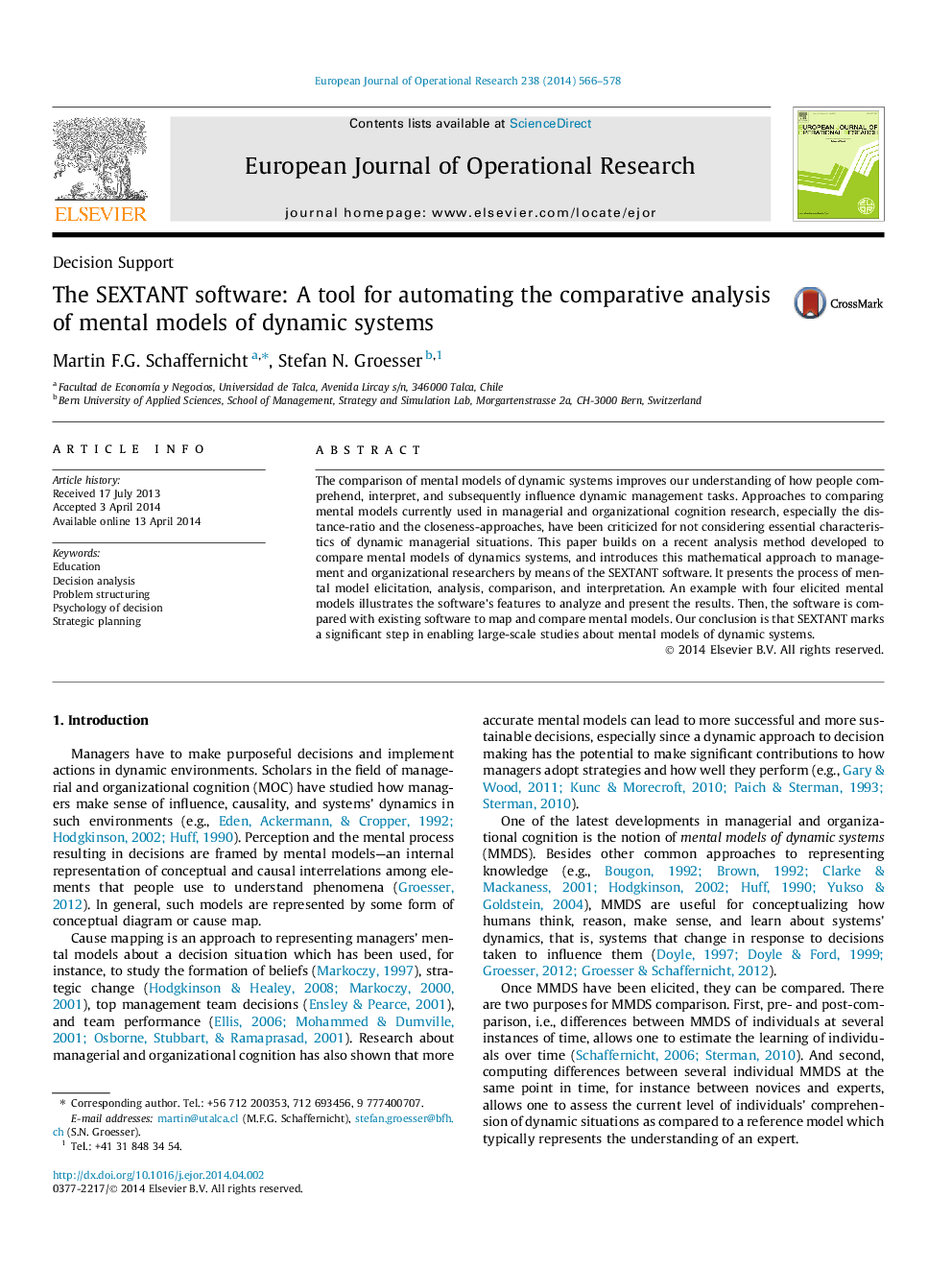| Article ID | Journal | Published Year | Pages | File Type |
|---|---|---|---|---|
| 478119 | European Journal of Operational Research | 2014 | 13 Pages |
•Most management situations are dynamic; and manager’s decisions are framed by their mental models.•Mental models of dynamic systems (MMDS) have three levels of representation: elements, loops and the whole model.•Distance ratios at each level reveal differences both between subjects and over time.•SEXTANT calculates the distance ratios for elements, loops and the whole model for large samples of MMDS.•SEXTANT enables researchers to strongly reduce the efforts to apply MMDS research.
The comparison of mental models of dynamic systems improves our understanding of how people comprehend, interpret, and subsequently influence dynamic management tasks. Approaches to comparing mental models currently used in managerial and organizational cognition research, especially the distance-ratio and the closeness-approaches, have been criticized for not considering essential characteristics of dynamic managerial situations. This paper builds on a recent analysis method developed to compare mental models of dynamics systems, and introduces this mathematical approach to management and organizational researchers by means of the SEXTANT software. It presents the process of mental model elicitation, analysis, comparison, and interpretation. An example with four elicited mental models illustrates the software’s features to analyze and present the results. Then, the software is compared with existing software to map and compare mental models. Our conclusion is that SEXTANT marks a significant step in enabling large-scale studies about mental models of dynamic systems.
